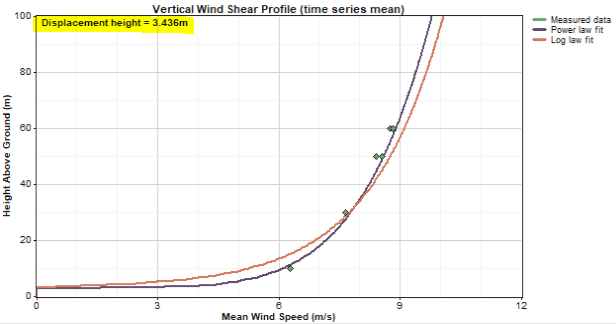
| Displacement Height |  |
Vegetation and other obstacles can cause the wind flow to be displaced from ground level, so that the wind speed reaches zero at some point above the surface, rather than right at the surface. The displacement height is the height above ground level at which the wind speed reaches zero. Garrat (1992) gives the rule of thumb that the displacement height equals the height of the vegetation multiplied by a factor of 0.6 to 0.9.
You can specify the displacement height on the Configure Dataset window, either as a constant value or varying by month or direction sector. If you specify a varying displacement height Windographer will create a calculated column containing the displacement height in each time step.
Displacement height affects shear calculations. The curve fit equations involve effective heights, which are nominal heights minus the displacement height.
If you enter a nonzero displacement height, it will appear as a note on all wind sheer graphs and tables:

You can also enter a displacement height in the Wind Shear Tool window. This tool window does not use your current dataset, but will quickly calculate the wind shear when you enter wind speeds and heights.
See also